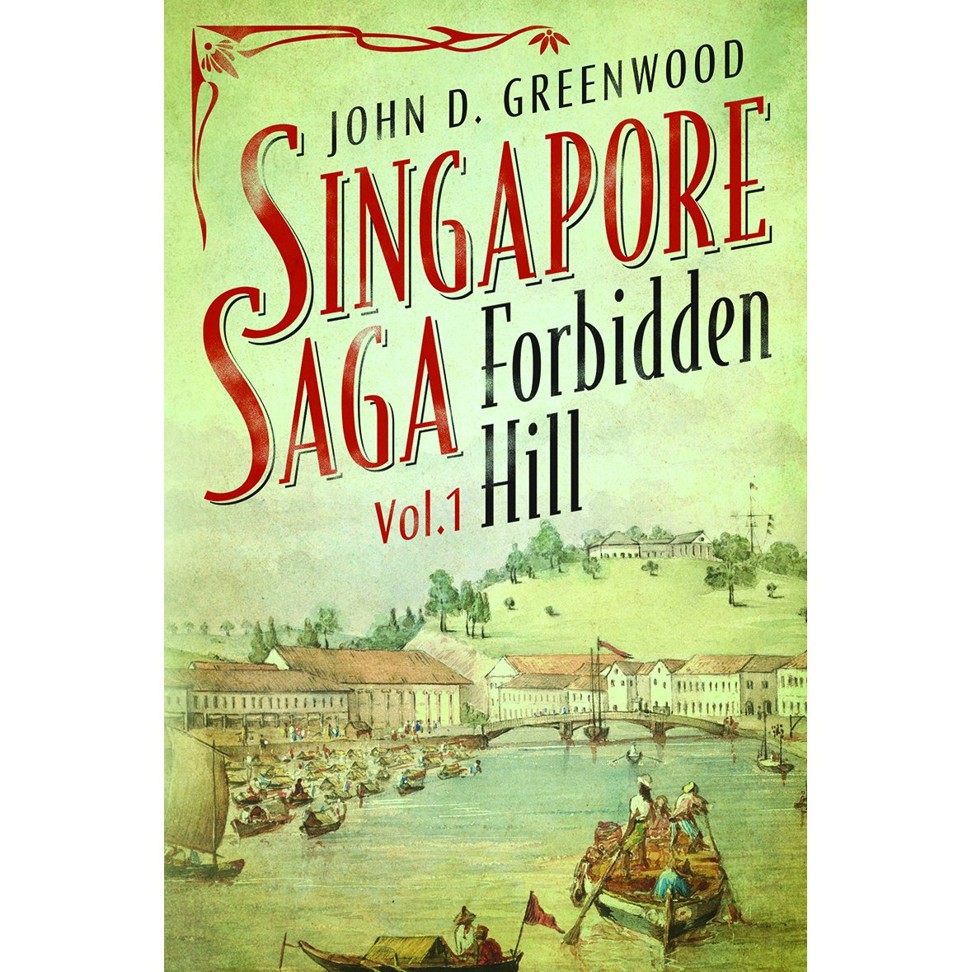
Review | Raffles and more in fictional account of Singapore’s birth as a British colony, Forbidden Hill
Author John Greenwood seamlessly weaves invented characters and imagined events into a historically accurate narrative about the early years of the Lion City’s development as a major trading centre
Forbidden Hill
by John D. Greenwood
Monsoon Books
3/5 stars
Stamford Raffles is the man most often associated with Singapore’s colonisation, and author John Greenwood attributes these words to him in new novel Forbidden Hill.
“Here we have planted the British flag among the ruins of the ancient capital of Singapura, the city of the lion! Here we will advance the interests of the East India Company and raise the Malay people to their former glory.”
This imagined quote is contained in a historically faithful account of Singapore’s transition from sleepy fishing village to major trading centre in the years between 1812 and 1836. While invented characters and purely imaginary events are woven in, the core of the story is factual and a great many of its cast were real personalities.

Raffles himself is a complex character: visionary but impractical, idealistic to the point of sanctimony and dogged by nepotism. There are a host of “ills” Raffles disapproves of, and for good reason: opium peddling, slave-trading and cockfighting, to name but three. He rants about all three, eventually banning cockfighting.
It isn’t Raffles, however, who must contend with the day-to-day headaches of administration. His official position is as governor-general of Bencoolen (a city in modern Sumatra, Indonesia), where he spends most of his time. It is his second-in-command, Major William Farquhar, who must get Singapore up and running.

Farquhar has no budget to speak of, yet manages to attract new traders to the settlement and appease the many new arrivals. He also keeps the local ruler – the sultan – and the sultan’s right-hand man, sufficiently content. Taken together, these achievements are no mean feat.
At the time, not only is Singapore covered by jungle and infested with rats and crocodiles, it is also under constant threat of attack from the Dutch, who hold sway in neighbouring Java. However far-fetched Raffles’s dream of Singapore as an “emporium of the East” might seem, he has the foresight to make it a free port – in contrast to the Dutch ports which charge arbitrary fees and discriminate against Asian trading ships.
Lured by the prospect of free trade, ships begin arriving in droves. Under Farquhar’s oversight Singapore’s tonnage soon surpasses that of Malacca and Penang combined. As trade grows, so does the town, thanks again to private enterprise. Singapore’s ethos as a mercantile centre was set early on.
But Forbidden City is not simply a colonial story. In addition to the band of real Scotsmen and Scotswomen, the leading Asian traders of the day are explicitly included: Arabs, Bugis, Sumatran, Indian, Malay and Chinese. Of course, there are thousands of others whose names we don’t know – the coolies and indentured labourers who clear the jungle, lay the roads and build the houses – and Greenwood imagines a few of them, too. The result is that there are a very large number of personalities to keep track of.
How Malaysian Chinese author Selina Siak turned cancer experience into catalyst for her creativity
Greenwood throws two fictional Europeans into this melting pot: a Scottish merchant by the name of Ronnie Simpson and the Englishwoman Sarah Hemmings. Along the pathways of a hill where the wives of the former rulers of Singapore once walked, Ronnie and Sarah find love.
But the waters around Singapore are treacherous. The pirates who ply the waters are the bane of the merchants’ lives. The real pirate Si Rahman makes an appearance, though readers may be unaware that he lived and was much feared in his day. This colourful character is far from being the only villain.

When Ronnie and Sarah lead a hunt for Si Rahman and his fellow pirates, the book takes a different turn. Greenwood’s chases and battles are gripping, with abundant details of weaponry and scenes so vividly bloody that some readers may be unsettled.
By the end of the book Raffles is dead and Farquhar has left Singapore. The island, however, is firmly British and thriving, with a well-settled community optimistic about the future.
Selina Siak’s second novel is an atmospheric account of family in wartime
Forbidden City is clearly the fruit of hours of labour in archives, a premise underscored by 65 footnotes at the bottoms of pages to explain unfamiliar terms. So it’s a shame that the text is littered with errors, from simple typos to problems with punctuation, missing words and page numbers.
Greenwood claims Edward Rutherfurd’s London as his inspiration. His preoccupation seems to be history and rendering facts with accuracy.
For the first half of the book, as characters are introduced, Forbidden Hill reads more like a work of non-fiction, which might please readers with a preference for history over fiction. Forbidden Hill is the first instalment in the Greenwood’s “Singapore Saga” with at least one sequel promised.
Asian Review of Books
